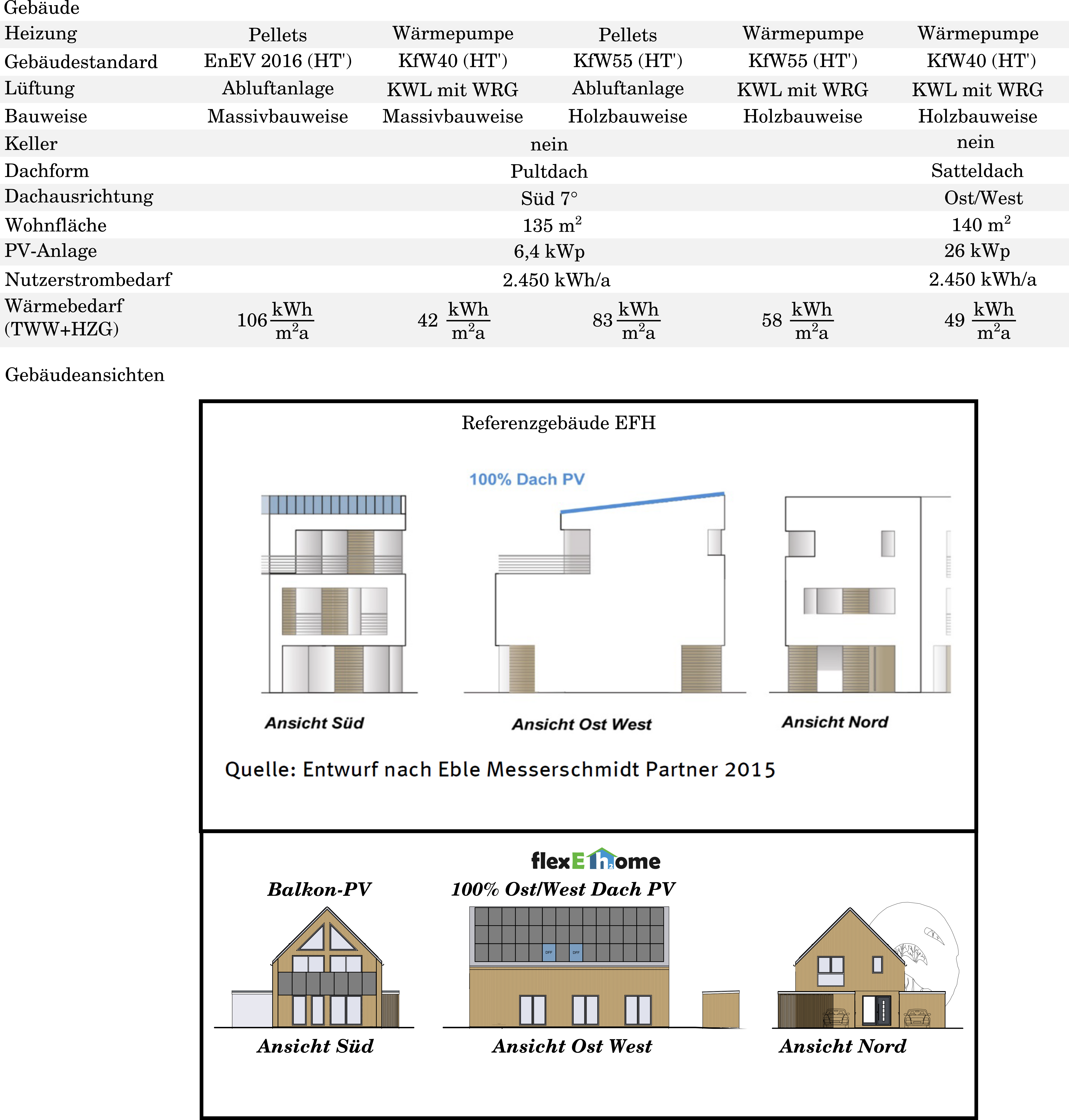The environmental sustainability of a building can be determined by life cycle assessment. The environmental impacts considered, in this case CO₂ emissions, are taken into account for the entire life cycle of the building. This means that CO₂ emissions are taken into account in all phases of a building, i.e. during construction, operation, maintenance and renovation, as well as during demolition, preparation and disposal, including all upstream chains of the products and materials used.
The result of a life cycle assessment provides a mass of CO₂ emissions of a building in its life cycle. For comparison purposes, this value is related to the time under consideration (usually 50 years) and the living space of the building under investigation. Thus, a CO₂ emission value is obtained that a building (type) emits annually and per m².
The results of this study are shown for the building in the figure above. Here, the left bars represent the CO₂ emissions of construction (gray, light gray) and demand during operation (yellow, light yellow). The right bar (white, dashed border), on the other hand, represents the emission savings from PV electricity used internally in the building (self-consumption share). Since the emissions from the internally consumed PV electricity are already included in the gray emissions from the PV system, they may be subtracted from the emissions from the electricity demand. Since the
building meets all electricity needs at any time of the year with the help of the building’s own PV system, the gray CO₂ emissions of the construction are equally the net CO₂ emissions.
For classification purposes, the results of four other building variants (new single-family house) are also shown. It is easy to see that the building has the lowest net CO₂ emissions of all building variants and thus represents the most ecological building concept.
The results of the comparative buildings are taken from a study commissioned by the Federal Environment Agency in 2019. In this, they are listed as ecologically optimized variants of single-family houses [see Energieaufwand für Gebäudekonzepte im gesamten Lebenszyklus p.62 f.]. In order to comply with the current status of life cycle assessment regulations, parts of the study results had to be converted (see Quality of Sustainable Buildings – QNG). This concerns only the environmental impact of the PV system.
In short, the new QNG accounting rules allow a more realistic assessment of the environmental impact of renewable energy exported from the building to the grid.
The building in Berlin is constructed with a basement. This does not increase the specific net CO₂ emissions of the construction, as living space is added. However, for better comparability with the results of the UBA study (reference building without basement), the
building was also considered without basement. Furthermore, the household electricity demand of the
building was adjusted to that of the reference building with 2,450 kWh/a.
The building is similar to the PlusEnergy building in terms of heat demand and heat supply components. Nevertheless, the building’s operating electricity and associated CO₂ emissions are significantly lower than those of the PlusEnergy building. This can be explained by the
building’s internal use of any waste heat from the power electronics, electrolyzer, and combustion power cell, which significantly reduces the required heat pump electricity.
The effects of a higher user electricity demand of 4,000 kWh and the presence of a basement on the LCA results of the building are presented in the research section.
Scroll down to see more information about the compared buildings.
